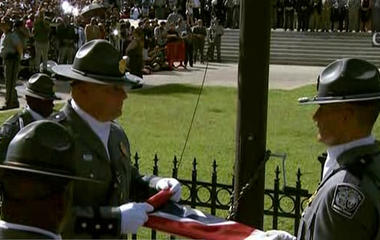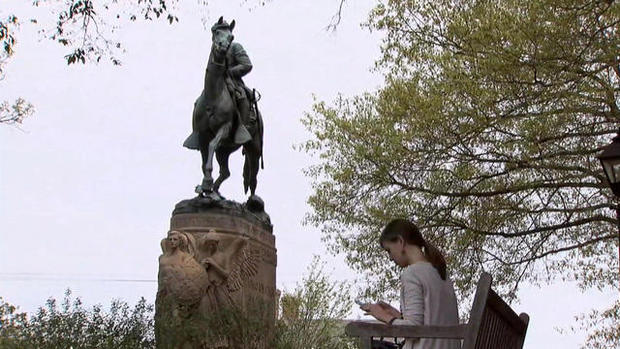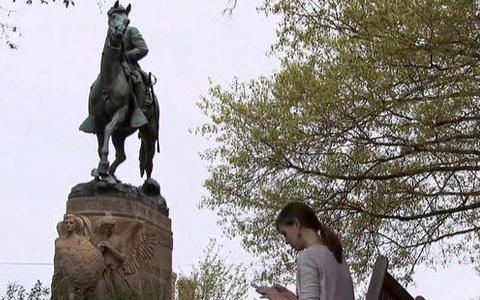More than 150 years after the Civil War, there is a new push across the South to take down Confederate monuments. Officials in Austin, Texas, and Louisville, Kentucky, have already voted to remove statues, and New Orleans is about to do the same.
In Charlottesville, Virginia, a statue of Robert E. Lee was erected nearly 100 years ago, but there, as in other cities, the Confederate symbol is now at the center of a bitter debate: How should we define our past as the nation moves forward? It’s all part of a public debate over whether these statues memorialize racism, reports CBS News correspondent Jan Crawford.

Confederate flag removed from South Carolina Statehouse
“It’s a symbol in my personal opinion of white supremacy and it’s a symbol that we cannot have in the middle of our city,” Charlottesville city councilman Wes Bellamy said. He has led the fight to move the town’s statue of Robert E. Lee, but opponents, led by attorney Charles Weber, argue the statue symbolizes something else.
“These are war memorials that exist for one purpose: to honor the men who fought. It’s not to promote a cause of a war, it’s not to glorify a war, it’s to honor the men who fought,” Weber said.
Weber points to a Virginia law, similar to others across the South, which blocks cities and towns from removing war memorials. He said the statue needs to stay forever, despite many finding it to be offensive.
“Offensive is a way to stop a conversation about the meaning of the statue. It’s not a way to start the conversation,” Weber said.

University of South Carolina professor Thomas Brown studies Confederate symbols.
“There are hundreds of these across the landscape of South,” Brown said. “The controversies over removal of monuments are partly over… who’s going to decide exactly what that public space is going to endorse?”
For years these fights focused on the Confederate flag, which largely has disappeared from public spaces, a reflection of changing attitudes. Opposition to change runs deep and can turn personal.
“I have been told I should be taken behind the watershed,” Bellamy said.
In Charlottesville, supporters of the statue unearthed crude tweets written by Bellamy as a younger man. He also was targeted with death threats. But Bellamy feels his fight is justified.
“We’ve seen there’s still a lot of issues in regards to race here in this community and the only way for us to move forward is to deal with them head on,” Bellamy said.
While the legal fight continues, city officials in Charlottesville will review a plan next week with recommendations on where to put this 28-foot statue if it’s ever allowed to be moved. But this problem will likely continue to pop up across America because there are a lot of historical statues.



